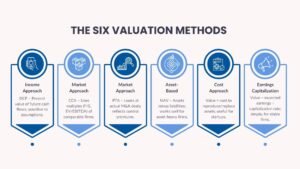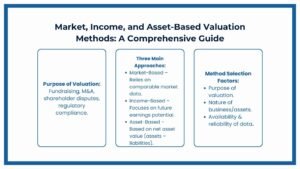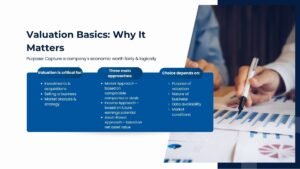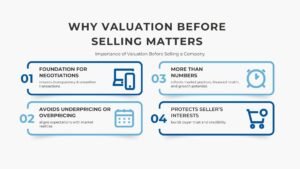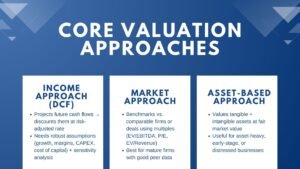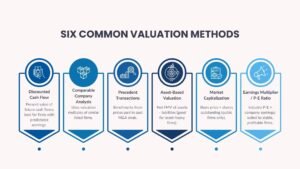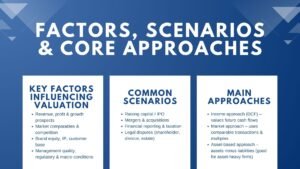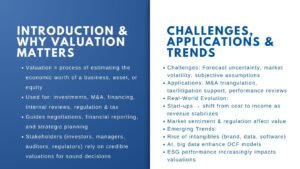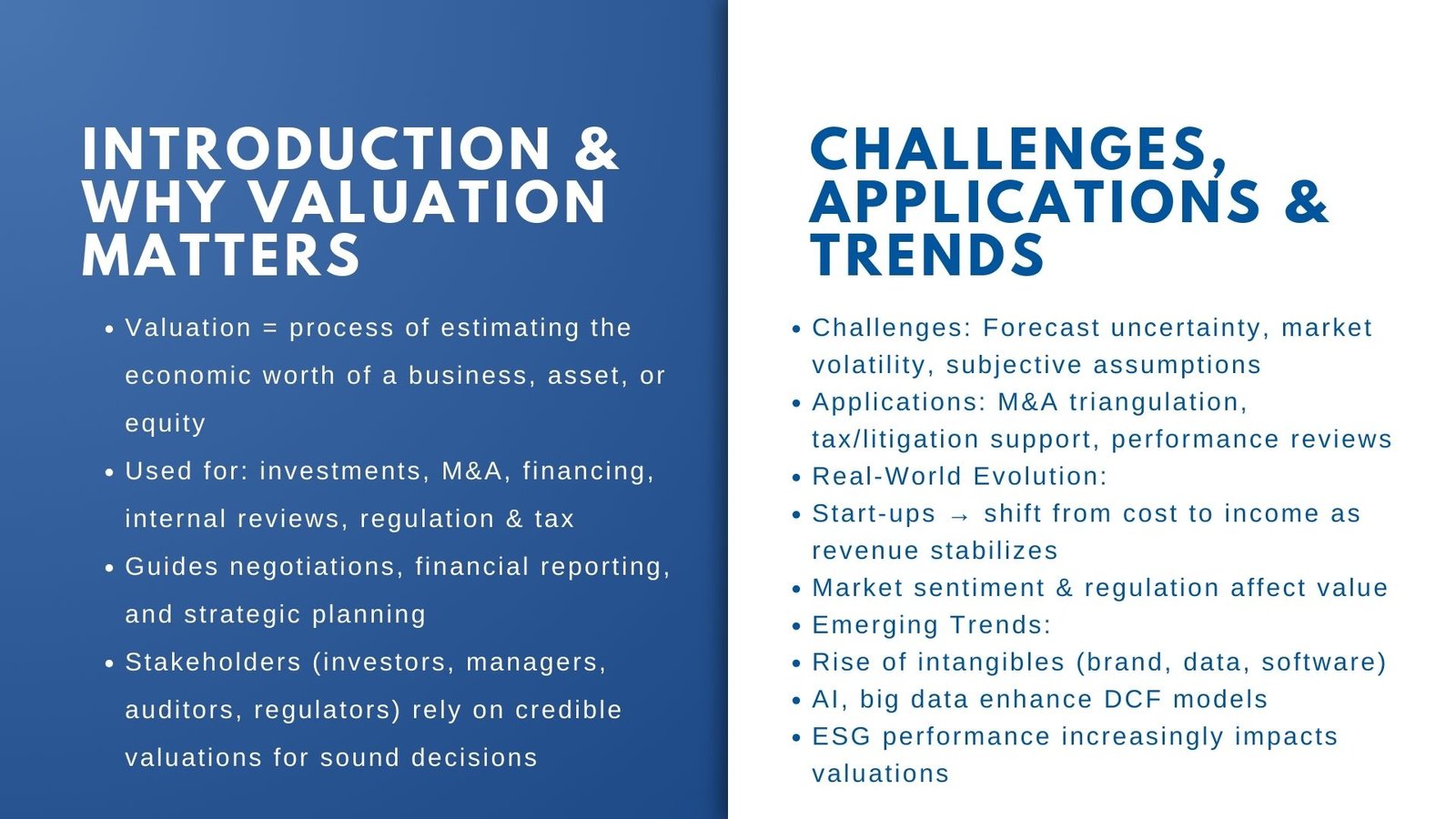
Complete Guide to Company Valuation Methods and Approaches
Learn the Complete Guide to Company Valuation Methods and Approaches
Financial decision-making, investment strategies and valuation of corporate transactions are based on it. The valuation process can be concerned with arriving at a value-ascertainment of a start-up or an intentional acquisition transaction or approximating the value of a shareholder equity. Valuation means are essential. The individual approaches provide different views, where the choice depends on the objective of valuation, industry conditions and available data.
In this guide, we will take a look and see how the major methods of valuation work by stating their rationale, areas of application, and limitations. Professionals offering company valuation by ValueTeam Singapore expert insights help investors and business owners understand how to value private companies in Singapore, while applying company valuation Singapore including revenue, market, asset-based methods to ensure accurate and reliable assessments.
Why Valuation Matters
Valuation is more than putting a dollar value on a business. It assists in negotiations, regulation compliance and planning. Valuation helps in determining whether a company is cheap or expensive as a result of investor views. To the management, it may affect the decisions concerning mergers and acquisitions, financing or even internal performance review. Regulators, auditors rely on proper valuations in the generation of tax, accounting, and reporting.
Key Valuation Categories
Valuation can be carried out in three broad methods which include the income method, the market method and lastly, the cost or asset method. Every technique is relevant to a given situation, and it has assumptions, advantages, and disadvantages.
Income Approach
Income approach is a method of valuation that puts a value on an asset in terms of future income to be received. This approach is of special application when it comes to the valuation of business, intangible value, and income generating real estate. It presupposes that the value of an asset consists in the amount of future cash flows that is reflected on its present value.
The most popular one is the Discounted Cash Flow (DCF) technique among its variations. DCF implies predicting future cash flows and discounting them to current amount basing on an appropriate discount rate usually representing the risk intertwined in future cash flows. The approach involves stringent assumptions on level of revenue growth, operating margins, capital expenditure and market conditions.
Among the key advantages of the income approach is that it is forward looking, something that is associated with the perceptions of investors with regards to value. Nevertheless, it also renders the approach prone to input assumptions. Modeling a small discrepancy in cash flow estimates or discount rates may have a huge (modeling) difference in the valuation.
Market Approach
The market approach ascertains the value of similar transactions or market information. It works under the assumption that equal assets should equal prices at equal circumstances. Fundamentally, it is underlain with the concept of substitution wherein an investor does not find it worth paying higher costs on an asset than other participants of the economy working on similar types of assets.
The application of the market approach can be done in two broad ways: by use of publicly traded company multiples of by use of precedent transactions. If valuation multiples apply, as is the case with publicly traded businesses, valuation multiples include price-earnings (P/E), enterprise value-to-earnings before interest and tax (EV/EBITDA) or price-book (P/B) are applicable to the valuation of the company. The Precedent transactions are the one that involves studying in the recent purchase of businesses of the same nature.
The commercial method is preferred over its objectivity and the usage of living-world information. It can be particularly helpful when performing an M&A or when an industry is experiencing a deal-flow. The disadvantage is that getting really similar companies or transactions may be difficult. Comparability can be distorted by differences in size, stage of growth or focus on geographic area.
Cost or Asset-Based Approach
In the asset-based approach, the value is estimated by calculating the cost of recreating the asset, or replacing the asset, minus the depreciation or obsolescence. It is widespread in cases when the asset is not a source of income or when the market data are unaccessible. This procedure is usually used in real assets such as plant and equipment, structures or property and in some cases the early growth-stage companies that have no predictable cash flows.
In intangible assets, the cost method is used to put down an estimate on the cost of reproducing the asset of interest. As an example, a software platform can be valued on the basis of the cost of developing the software through the writing and subsequent testing of the code and corrected with obsolescence and functional usage.
Although simple, the method has the tendency to underrepresent the acceptable economic worth of assets that have high returns concerning the cost. It also fails to take into account synergies and growth potential in future. However, it is significant where an attempt is made to price hard-to-price or non-operating assets.
Choosing the Right Method
The valuation method is a matter of choice with respect to context and purpose of valuation. In the case of the mergers and acquisitions, the income and market methods are usually favored. Contrastingly, the asset-based strategy can be applied in such cases as liquidation / distressed situations. Depending on the type of asset and the reporting standard used, financial reporting valuations, particularly under the requirements of an accounting standard, such as IFRS or ASC, might need a combination of any of these methods.
Other factors that valuers have to take into account are industry-specific factors. As an illustration, tech firms that have high intellectual property and low profits can be evaluated more effectively using future revenues or expenses-based estimation of R&D. A manufacturing firm that has stable operations and has a couple of peers in the market may be appropriate with a market-based approach.
Limitations and Challenges
Each method of valuation is founded on assumptions, which adds some subjectivity. The input of information which could be the financial prediction, the market comparable or the estimate of facility cost would highly determine the quality of output. There is a lack of certainty particularly in turbulent markets or new sectors that makes it challenging in terms of forecasting and benchmarking.
The third important issue concerns the fact that the selection of the methodology should match the purpose of the valuation. The application that suits investment appraisal may not suit in financial reporting or tax compliance. To exemplify, valuations are subject to IFRS 3 and the usage of fair value is mandatory which may demand the combination of approaches.
In addition, valuation results can be variedly interpreted by the various stakeholders. Investors may be optimistic, given their concern about upside potential whereas auditors may be concerned about whether they are conservative enough and are compliant with the laws.
Real-World Applications
As a practical matter, valuation is not an exercise in standards. M&A experts tend to consider triangulation of the value by adopting a variety of ways that lead to the identification of a sensible range. As an example, a buyer might begin with a DCF and estimate future returns and compare the result obtained with transaction multiples. The cost approach can help provide a defensible base in legal or tax controversies, particularly those where income forecasts are of a speculative nature.
The valuation is also a moving term. With the growth of a business, the valuation profile of a business also changes. As startups start generating steady revenue streams, their valuations can be based on assets or costs where valuations based on income may be used. In the same manner, the market value of a company can also change substantially due to trending in the industry, market sentiments, or a shifting in regulations.
Emerging Trends in Valuation
Due to the emergence of technology, intangible ones such as brand value, software and customer information have become the focus of valuation. Old approaches are being transformed in a way of consideration of these changes. As an example, complex data analysis and machine learning are being considered to enhance scenarios modeling and accuracy of forecasting in DCFs.
Simultaneously, the global accounting standards are being adjusted to be more effective in their implications on the valuation of intangible assets. IFRS frameworks and ASC frameworks have resulted in increased documentation and reporting of fair value; therefore, the subtleties of independent valuation specialists and adequate approaches are of more concern.
Besides, valuations are being affected by environmental, social, and governance (ESG) factors. Higher-performing companies based on ESG have a valuation premium to lower-performing companies, and suffer downward valuation in case they are exposed to environmental or social risks. Such considerations are being added in more and more discount rate changes or risk calculations.
Conclusion: Complete Guide to Company Valuation Methods and Approaches
Learning about valuation methods is a basic requirement in order to survive in the contemporary monetary and business world. As an entrepreneur, investor, or any other person connected to the financial sector, you have to make the correct choice when determining what valuation approach to use and this takes prudence and understanding of purpose. Both strategies, income-based, market-based, or asset-based, have their own revelations, as well as limitations. Methods tend to merge in a thorough valuation to find a satisfactory and reasonable conclusion.
With the increasingly intangible-oriented enterprises and the proliferation of global standards, precise, visible and justifiable valuations will become even more highly demanded. Expertise in such strategies will continue to play a key role in strategic decision-making and financial reporting as well as in value creation.


